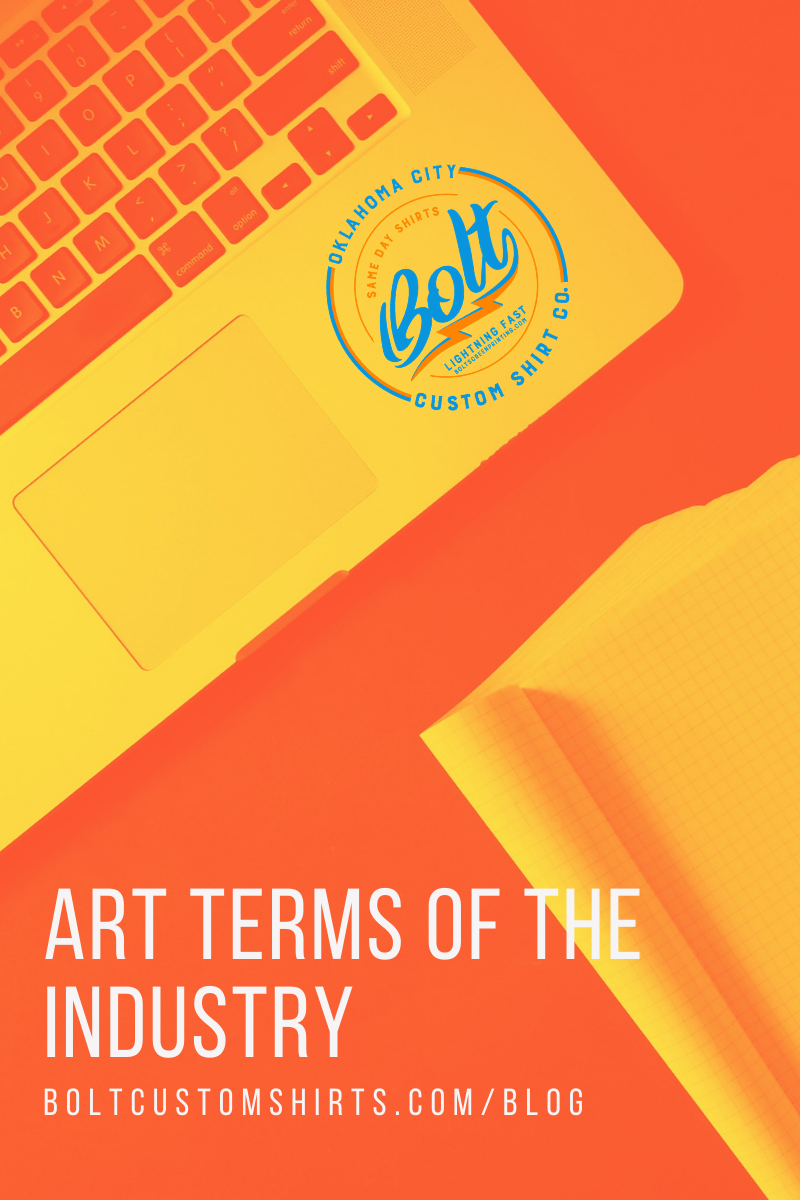Art Terms of the Industry
- boltscreenprinting
- May 7, 2021
- 3 min read

You’ve talked with your graphic designer or your artist, or you’re working on being self-taught on the skill and you have heard all these terms that you don’t know where to start with what they mean. We understand the struggle as you try and juggling 10 million things at once, so we figured we’d make it a little bit easier by helping you break down the terms. In this blog post you’ll find four common terms that you’re going to hear a ton (if you haven’t already started to hear them.)
JPEG
This is an acronym for “Joint Photographic Experts Group,” which is the name of the committee that developed the format. Knowing this however isn’t necessary, but rather you should know that JPEG is going to be a compressed image file format. This file format is not limited to certain amounts of color like GIF images often are. This file format (JPEG) is going to be the best for compressing any photographic image, as it contains colorful, high resolution image data. A major issue with JPEG files is that it is a “lossy” format which means when it gets compressed too much it will lose quality and eventually can look “blocky.” A plus is that this file format will look the say on both Mac and PCs.
GIF
Let’s get into what GIF means and what it is exactly. As you might know, GIF and JPEG images are widely used on the Web and are supported by all browsers and web software. It can be quite simple when trying to decide which one you should be using. Charts, screenshots, any type of technical drawings are going to best compressed into GIF files. Keep in mind that GIF files can only hold up to 256 colors (aka 8-bit color).
If you’re working with photographs then we recommend using a JPEG file because of how it supports 24-bit color and holds several options of compression levels.
BMP
BMP is short for “bitmap.” This format is used internally by Microsoft Windows graphics subsystems and is used commonly as a simple graphics file format on that specific platform. This file formats are typically not going to be compressed, and so they are going to be significantly larger than JPEG or PNG files. While it does have shortcomings, BMP’s simplicity and its wide usage in Windows etc. makes this format a very common one.
SPOT COLORS
A spot color is a uniquely mixed ink that is applied on the printing press machine. This is opposed to a mix of the four inks that make up the printing process. These “spot colors” can be produced in a much more vibrate manner and it may have some special characteristics that are available in process inks. For example, day-glow or some sort of metallic ink. Since these colors only use one screen, these spot colors can often reduce the cost of printing if your choices are limited to black plus one spot color.
But it is important to note that if you are printing a full color piece and plan on adding in a spot color, it is going to dramatically increase your cost for printing the product.
We hope that we helped define some common art terms, and if there are any that we didn’t answer then comment below so we can answer them!
Here at BOLT Screen Printing we pride ourselves in creating quality custom apparel that brings your vision to life. We have assembled a team of professionals, who strive to understand your goals and assist you with out of the box advertising and branding techniques. We combine our knowledge of all things apparel with your project goals in order to provide killer gear and a stress-free experience.
With an ambition to create premium quality vintage threads, Bolt was born. From our passion of creating the best clothing for our clothing store Opolis and our customers expressing the desire to see their designs on our high-quality apparel we knew the next step would be to open Bolt. After being in the industry for over 13 years, we've perfected the process of turning amazing ideas into even better results. Contact us today by emailing us at boltscreenprinting@gmail.com, or giving us a call at 405-493-9557!




Comments